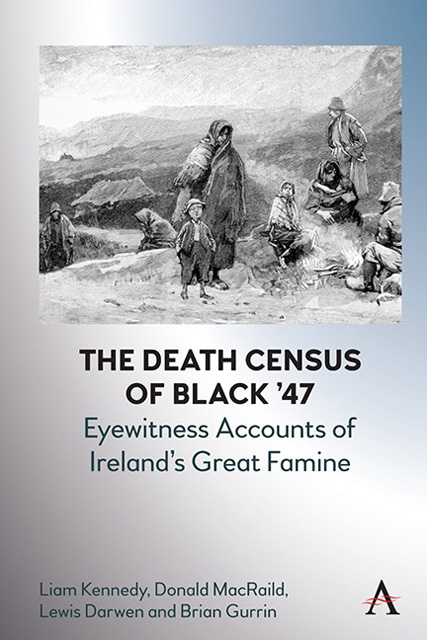Chapter Six - Famine, Priests and People
Published online by Cambridge University Press: 17 October 2023
Summary
We have this day to announce the death at Cootehill, in the 25th year of his age, and the 5th of his ministry, the Rev. John Smith, R.C.C. of Drumgoon, deservedly regretted by all who came within the compass of his ministration. Stricken by typhus fever whilst in the discharge of his duties to which so many of the faithful clergy of the people have fallen martyrs, he expired on the 22nd instant, in the fervent hope of a blessed Resurrection. How is all this desolation to be accounted for? Surely it was not caused by the visitation of an angry Providence, but by the crying injustice of our earthly rulers.
Revd P. Mullins, Killeely, GalwayThe botanical image that so transfixed the Irish public in the autumn-winter of 1845 was that of the putrefying tuber. The sense of foreboding and despair this inspired was captured in a contemporary oil painting – ‘The discovery of the Potato Blight’ – by the Cork-born artist, Daniel McDonald (1821–53). It has graced the cover of several histories of the Irish Famine. Yet the image of the mess of potatoes was symptomatic of a deeper malaise, of a social system that accommodated runaway population increase, leaving its people vulnerable to harvest failure. George Nicholls’ hastily compiled reports on a Poor Law for Ireland in 1838 spoke of a ‘reckless disregard of the future’. Weak landlordism, which might be seen as a consequence, though not a necessary consequence of seventeenth-century colonialism, had accepted or acquiesced in the proliferation of cottier and labouring households, most notably in mountainous localities and west of the Shannon. Strong landlordism would have meant a more interventionist ruling class exercising tighter control over household formation, accompanied by periodic evictions of squatters and smallholders as market conditions changed. To take a nearby comparator, this would have meant a tenurial regime more akin to that of Scotland where landlords were vigilant in controlling access to land and housing. This had a ruthless edge, so the Scottish historical alternative had its downside, particularly in the shorter term. .
- Type
- Chapter
- Information
- The Death Census of Black '47Eyewitness Accounts of Ireland's Great Famine, pp. 89 - 100Publisher: Anthem PressPrint publication year: 2023



